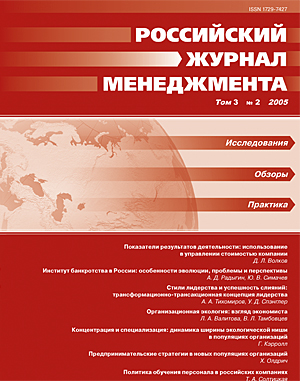The Institution of Bankruptcy in Russia: Specifics of Evolution, Problems and Perspectives
Abstract
This article aims to trace the general evolution of the bankruptcy institution in contemporary Russia in the context of the most important economic and legal features and drawbacks related to each of its stages. Examination of the general evolution of legal stages in the development of bankruptcy institution is anticipated by brief analysis of traditional models and specificity of transition economy. Nevertheless main attention is paid to the third stage (starting with 2002), which presupposes analysis and general evaluation of main novations contained in the Third law on bankruptcy, first results obtained from the implementation of new legislation in 2003–2004, prospects for further modification of Russian bankruptcy legislation.
Downloads
References
REFERENCES IN LATIN ALPHABET
Downloads
Published
How to Cite
Issue
Section
License
Articles of the Russian Management Journal are open access distributed under the terms of the License Agreement with Saint Petersburg State University, which permits to the authors unrestricted distribution and self-archiving free of charge.





